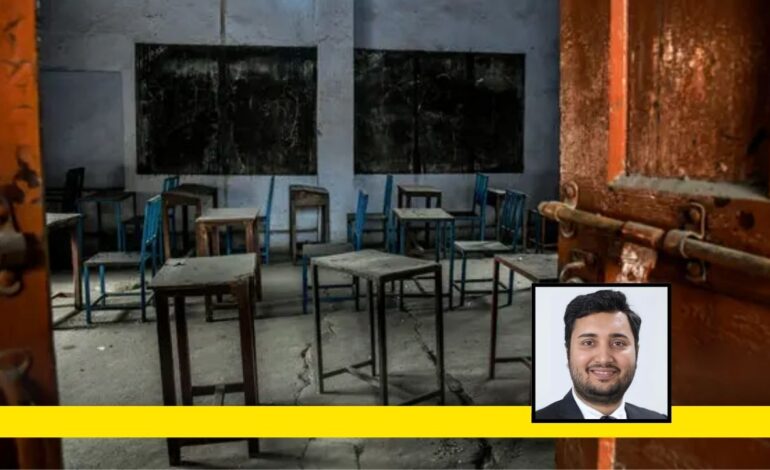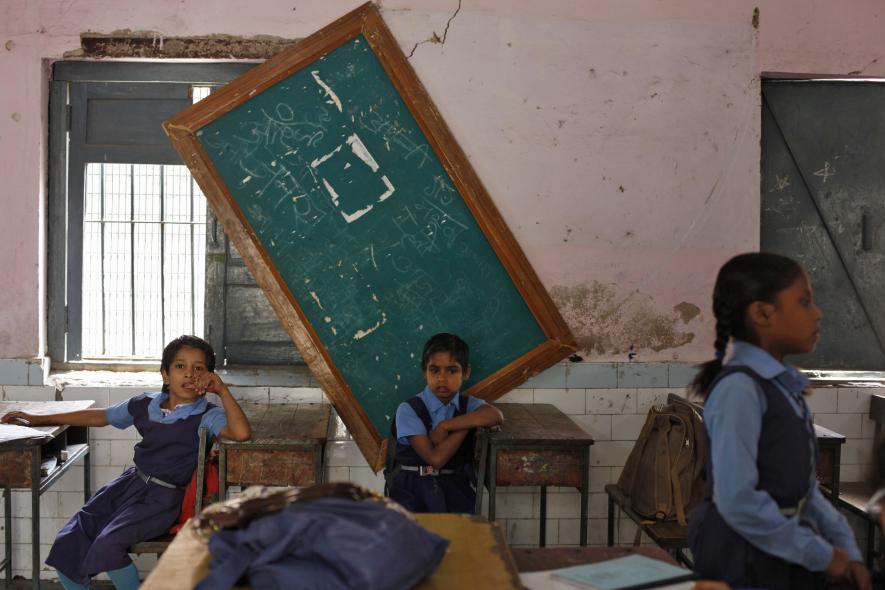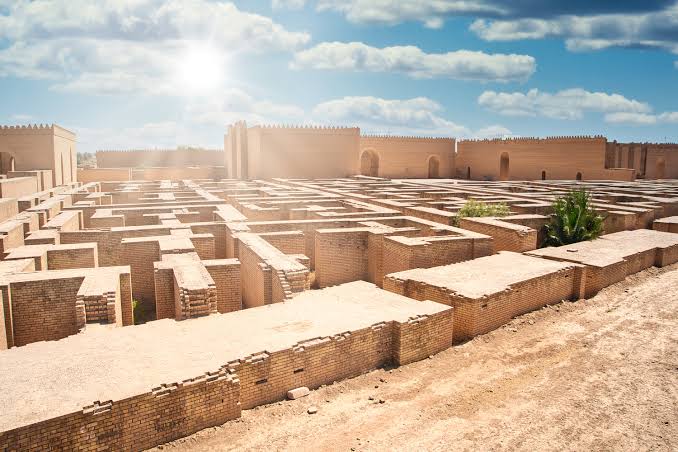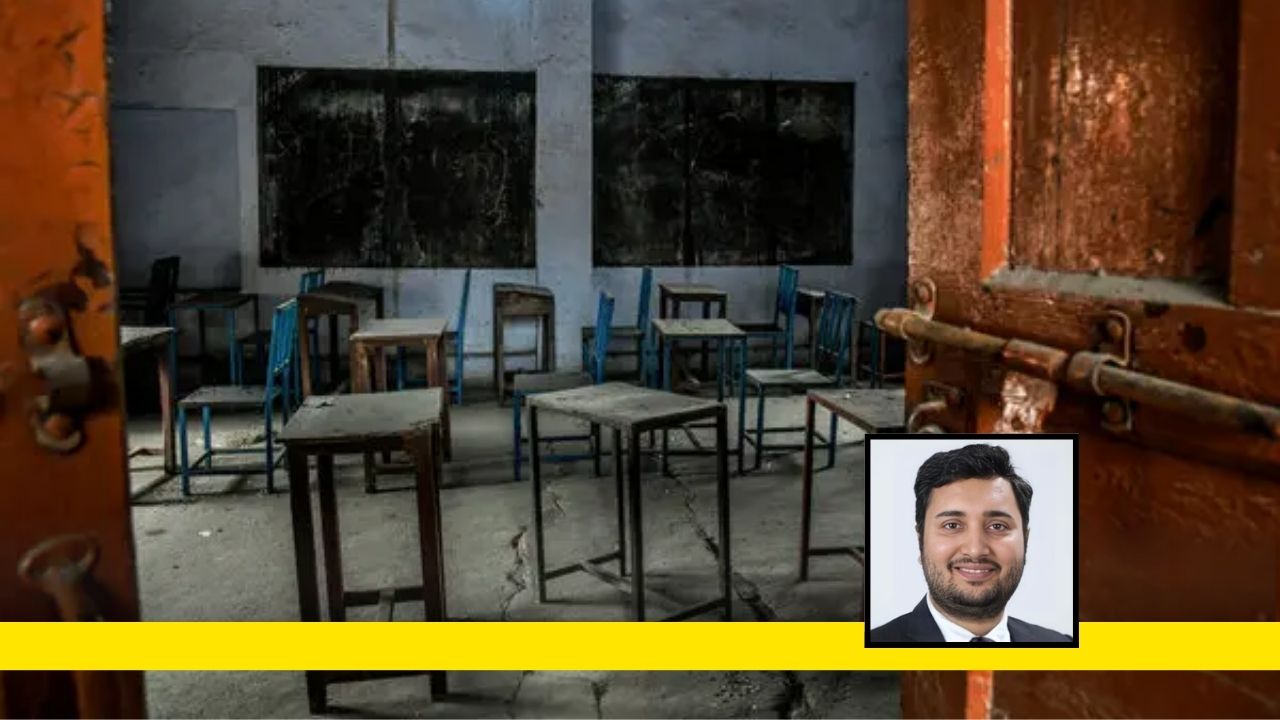A System in Retreat: The Slow Dismantling of Public Schooling in India

The Uttar Pradesh government’s recent decision to merge over 5,000 government schools each with fewer than 50 students with neighbouring institutions delivers yet another blow to India’s weakening public education infrastructure. While officials claim the move will improve resource utilization and education quality, teacher associations and education advocates warn that it will disproportionately harm rural, tribal, and low-income communities. They also highlight that no new teacher recruitment has taken place for basic schools in Uttar Pradesh since December 2018 a vacancy freeze now spanning nearly seven years. Though the government insists schools are not being “closed,” relocating students to distant campuses risks higher dropout rates, especially among girls and younger children.
This is part of a broader national trend. Between 2014 and 2023, nearly 89,000 government schools were shut down, an 8% decline in just a decade. States like Madhya Pradesh (–24.1%) and Uttar Pradesh (–15.5%) have seen the sharpest reductions. Marketed as “school rationalisation,” this policy reflects a systematic retreat from the state’s constitutional obligation under the Right to Education (RTE) Act.

These closures hit the most marginalized children the hardest. For many in villages, tribal areas, and poor urban neighbourhoods, a government school is the only viable path to education. When these schools close, children are often forced to travel long distances, a burden that is unsafe, unaffordable, or impractical, especially for girls. As a result, many are pushed out of the education system entirely. The UDISE+ 2023–24 report confirms that school mergers and closures frequently lead to student dropouts when nearby, accessible alternatives are not provided.
Private Schools Are Growing, but at What Cost?
Over 43,000 private schools have emerged since 2014. According to Brookings India, families in the bottom 40% income bracket spend ₹1,200–₹3,000 monthly per child on private schooling covering tuition, books, transport, and uniforms effectively forcing marginalised families into costly options. A recent survey (LocalCircles, 2025) found that private school fees in India have increased by 50% to 80% between 2022 and 2025. This survey, which talked to 31,000 parents across 309 districts, revealed that 36% of parents saw their fees go up by 50-80%, and 8% saw increases even higher than 80%. Fee regulation remains weak. Only Delhi, Karnataka, Telangana, and Jharkhand have introduced limited fee controls, but most remain unregulated.
Government Schools Lack Basic Facilities and Teachers
UDISE+ 2023–24 reveals stark infrastructural gaps in government schools including lack of electricity, usable toilets or other infrastructure. More than 1.1 lakh schools are single-teacher setups, many in states where teacher vacancies exceed 30%, and where tribal and rural schools remain understaffed.

Exam results can be misleading
Board exams offer a misleading narrative. Gujarat recorded an 83% pass rate in 2024 Class 10 exams, yet over 1.1 lakh failed in mathematics, and 91,000 in science
ASER 2023 reveals, Just 43.3% of Class 5 students can read Class 2 texts and 27.5% can solve basic division. In the 14–18 age group, 42% cannot read simple English sentences, and over 50% struggle with division. Meanwhile, the 2023 Wheebox–NASSCOM report flagged only 25% of engineering graduates and 10% of general graduates as employable.
Education Stress Is Hurting Children’s Minds
India’s educational collapse also hurts children psychologically. A 2025 study from IPGMER Kolkata linked rising adolescent suicidal tendencies and substance use to academic and financial stress. NCERT survey (2022) found that one in four students suffer from anxiety or depression.
Technology Is Not a Quick Fix
Even the much-touted digital revolution offers no simple solution. While ASER Digital (2024) data indicates that 82% of rural youth own smartphones, only 57% actually utilise them for learning. This highlights not just a digital literacy gap, but also the enduring reality that digital enablement cannot compensate for fundamental infrastructure deficits. In states like Bihar and Uttar Pradesh, where electricity and basic sanitation remain pressing concerns, the promise of online learning rings hollow. Without the foundational elements of a conducive learning environment, technology merely highlights existing disparities rather than bridging them.

Public schools are more than buildings; they are bridges to opportunity, equality, and national progress. For millions of children across rural, tribal, and low-income urban communities, they are the only gateway to education. But today, crumbling classrooms, absent teachers, and shrinking budgets threaten to lock out the very children they were built to serve. Every school closed is a future lost. The first step is stopping the decline. The next is restoring faith in public education and reclaiming our commitment to equal education for all.










